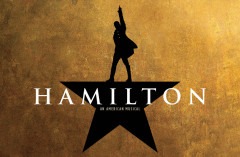PR Lessons from “Hamilton”
“The Man Is Non-Stop”
Published on March 11, 2020, at 8:12 p.m.
by Hannah Taylor.
Before there was Edward Bernays, there was Alexander Hamilton. Hamilton is best known as a founding father of the United States, but Lin-Manuel Miranda’s musical about the historical figure reveals his public relations expertise. “Hamilton” debuted on Broadway at the Richard Rodgers Theatre five years ago, but the breakout hit’s cultural influence and educational value are unwaveringly relevant in 2020 — coveted show tickets still go for hundreds of dollars, AP U.S. History students use its score to study, and Disney recently acquired the rights to a worldwide theatrical release of a live performance with the original cast for an astounding $75 million.
While “Hamilton” can sell out seats, break film acquisition records and help high schoolers pass history exams, it also offers a myriad of lessons for PR practitioners and students.
“Write day and night like you’re running out of time.”

Hamilton’s meteoric rise, from being a West Indies emigrant to being the first U.S. secretary of the treasury, is a recurrent theme throughout the musical. His remarkable success is attributed to his work ethic and writing ability. The closing number of Act 1, “Non-Stop,” details how Hamilton fought for the ratification of the United States Constitution by collaborating on a series of essays with James Madison and John Jay called The Federalist Papers (Hamilton wrote 51 of the 85 articles). Like all good PR professionals, he understood the power that written words have to change public opinion.
“I wanna be in the room where it happens.”
In Act 2, “The Room Where It Happens” illustrates Aaron Burr’s frustration at his lack of decision-making
power. A secret dinner with Hamilton, James Madison and Thomas Jefferson ends with a controversial, political compromise to approve Hamilton’s proposed financial system in exchange for moving the nation’s capital to the Potomac River. Burr isn’t privy to these discussions; therefore, he has no say in what happens. The lesson here? You must have a seat at the table in order to advise strategic communication efforts.
“Overwhelm them with honesty.”
One of the core values listed in the PRSA Code of Ethics is honesty. “The Reynolds Pamphlet” number in Act 2 offers a glimmer of insight into Hamilton’s commitment to truth

and accuracy. After he is accused of abusing his power as the U.S. secretary of the treasury, Hamilton releases a 95-page document revealing the true source of the scandalous rumors: not improper financial speculation, but blackmail stemming from an extramarital affair with Maria Reynolds. He denies the corruption charges, writing in extensive, lurid detail about the year-long relationship in an attempt to save his political reputation — a prime example of complete transparency in crisis communications.
“Who tells your story?”
As a PR practitioner, it’s your job to craft narratives for your clients and tell stories that serve to achieve their goals. Hamilton spent his entire life creating his own story by writing, reading and writing some more. He developed relationships with the publics who mattered most to him and never stopped fighting for the causes he believed in.
Hamilton was a public relations pioneer before the practice even existed — “and if you don’t know, now you know.”




